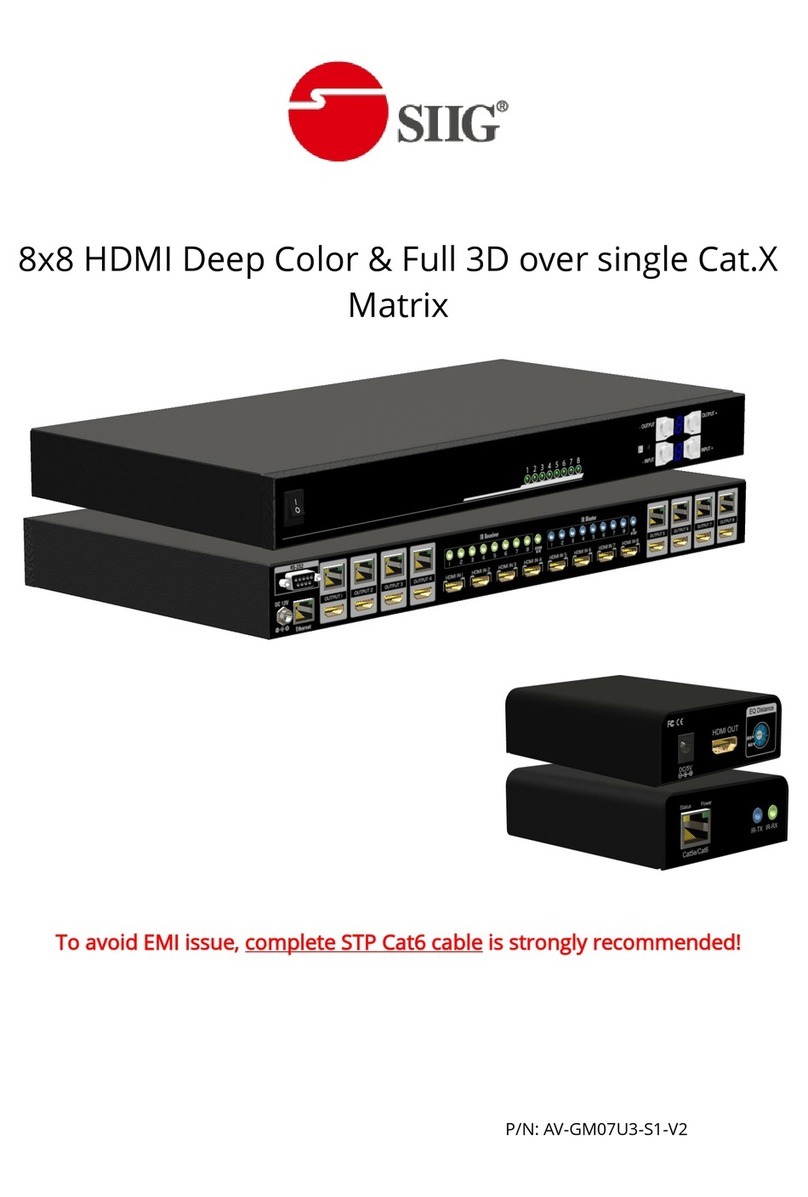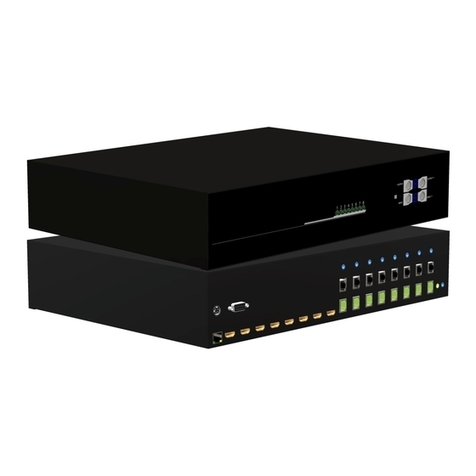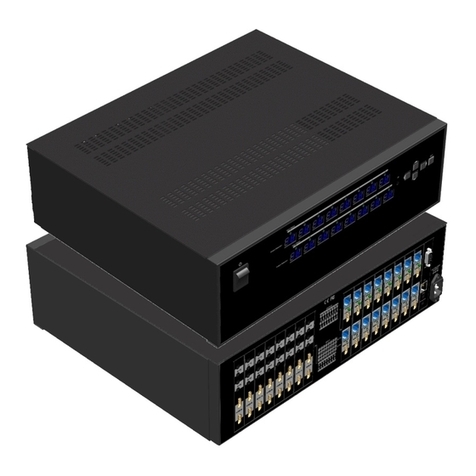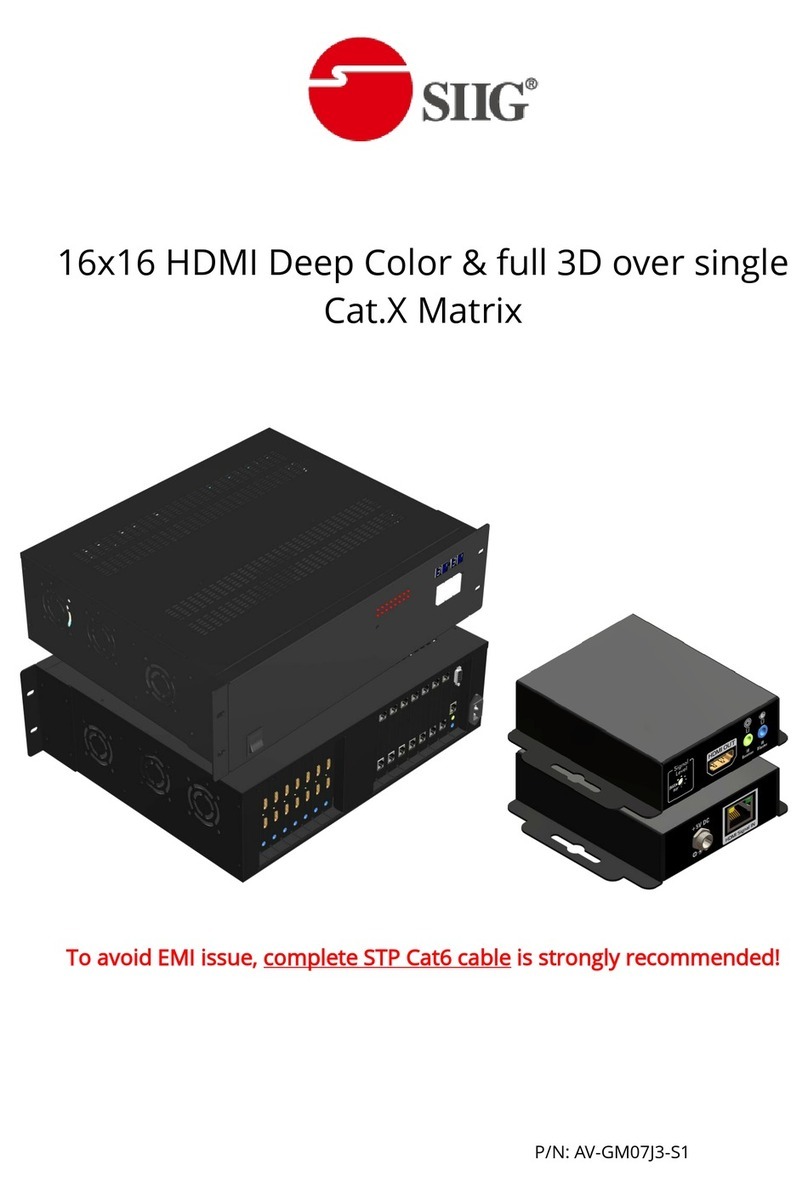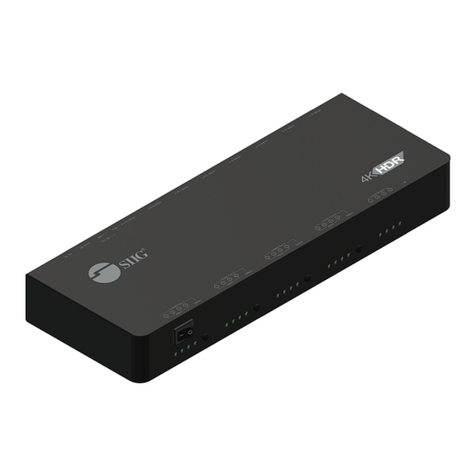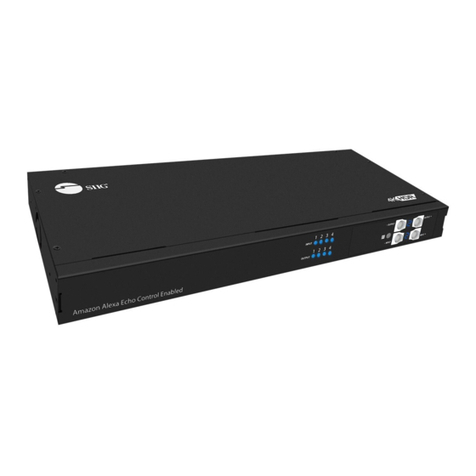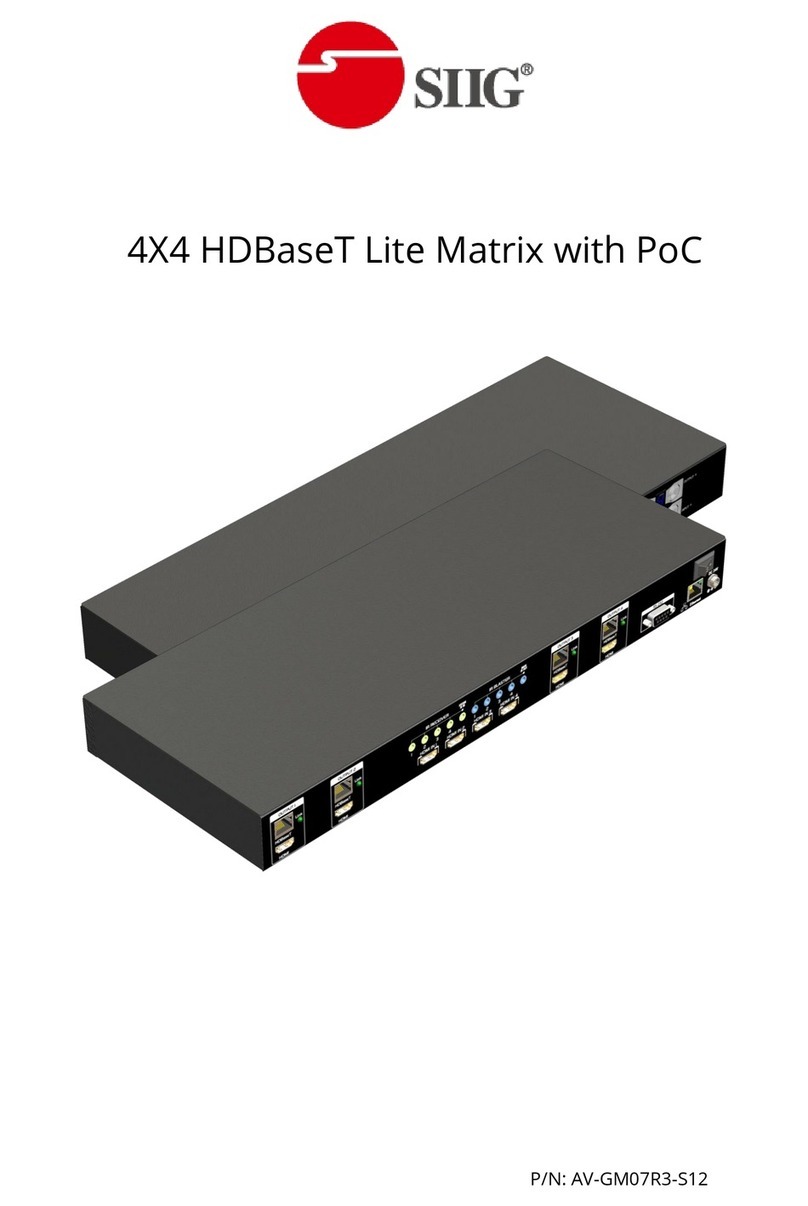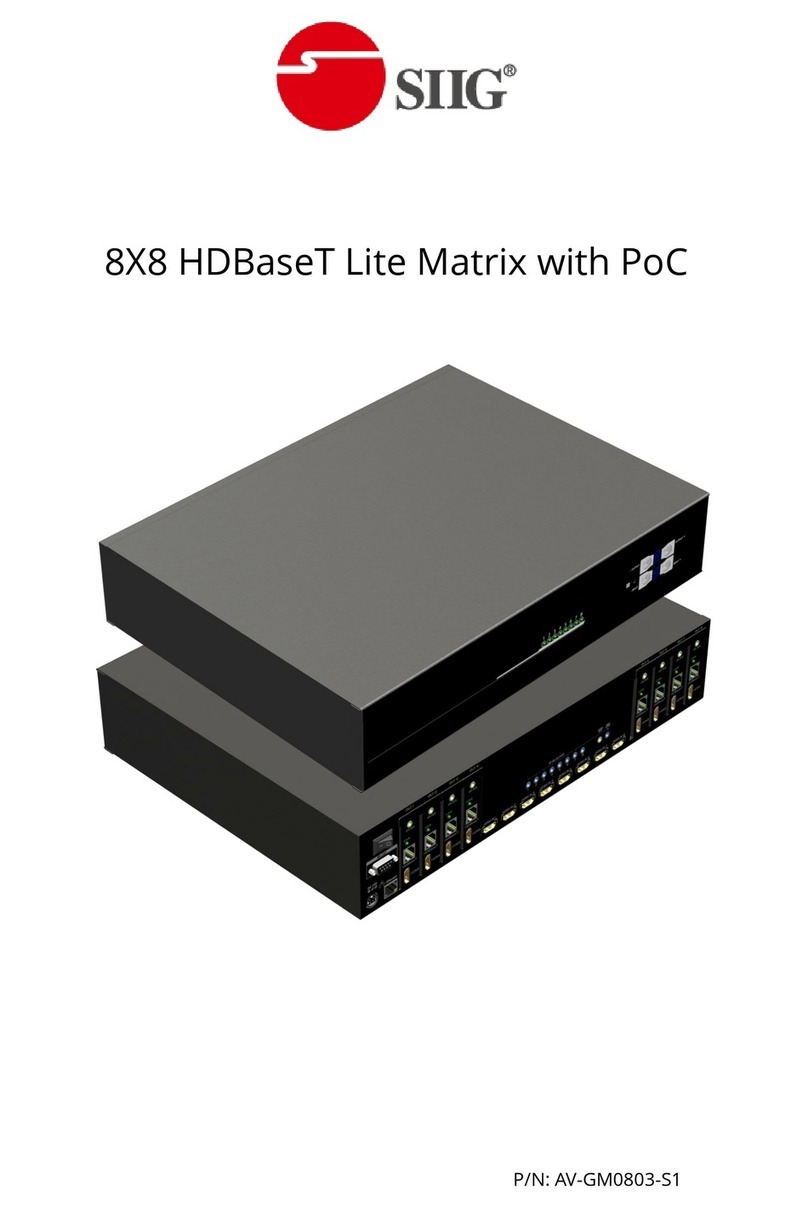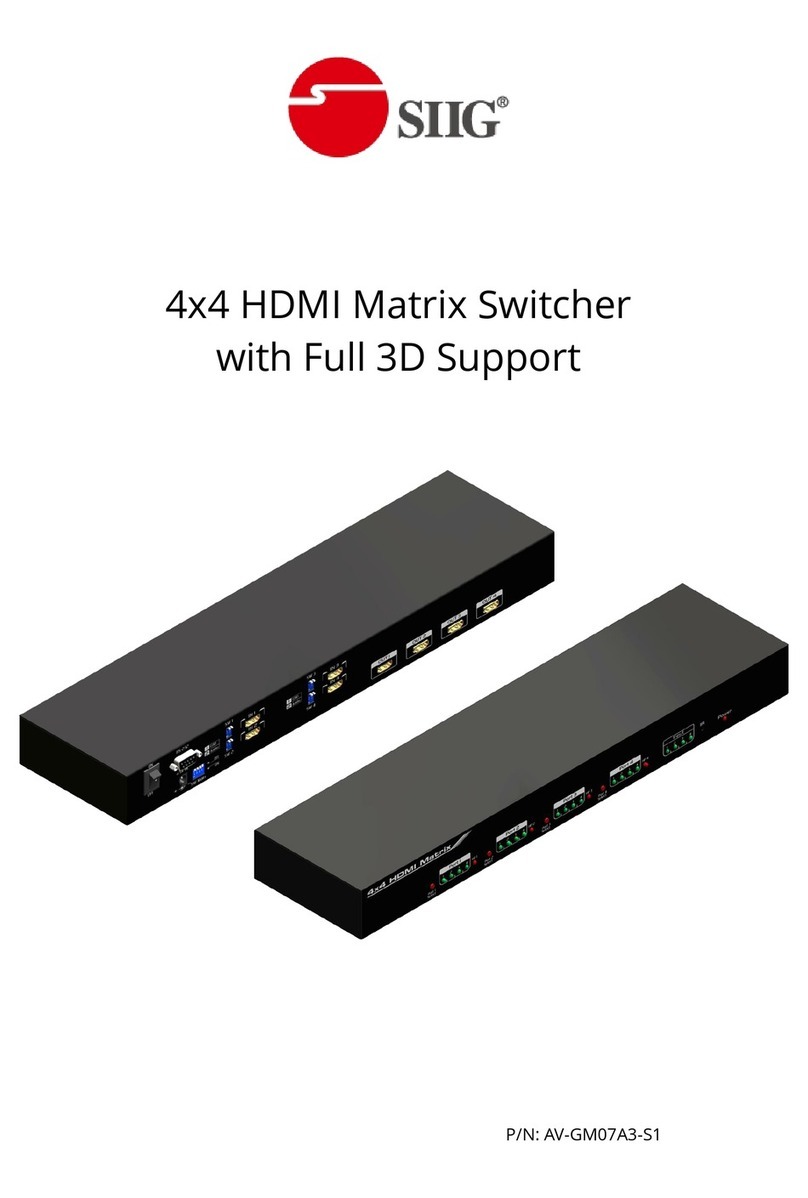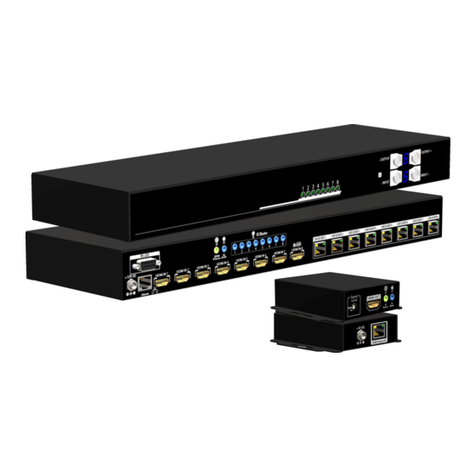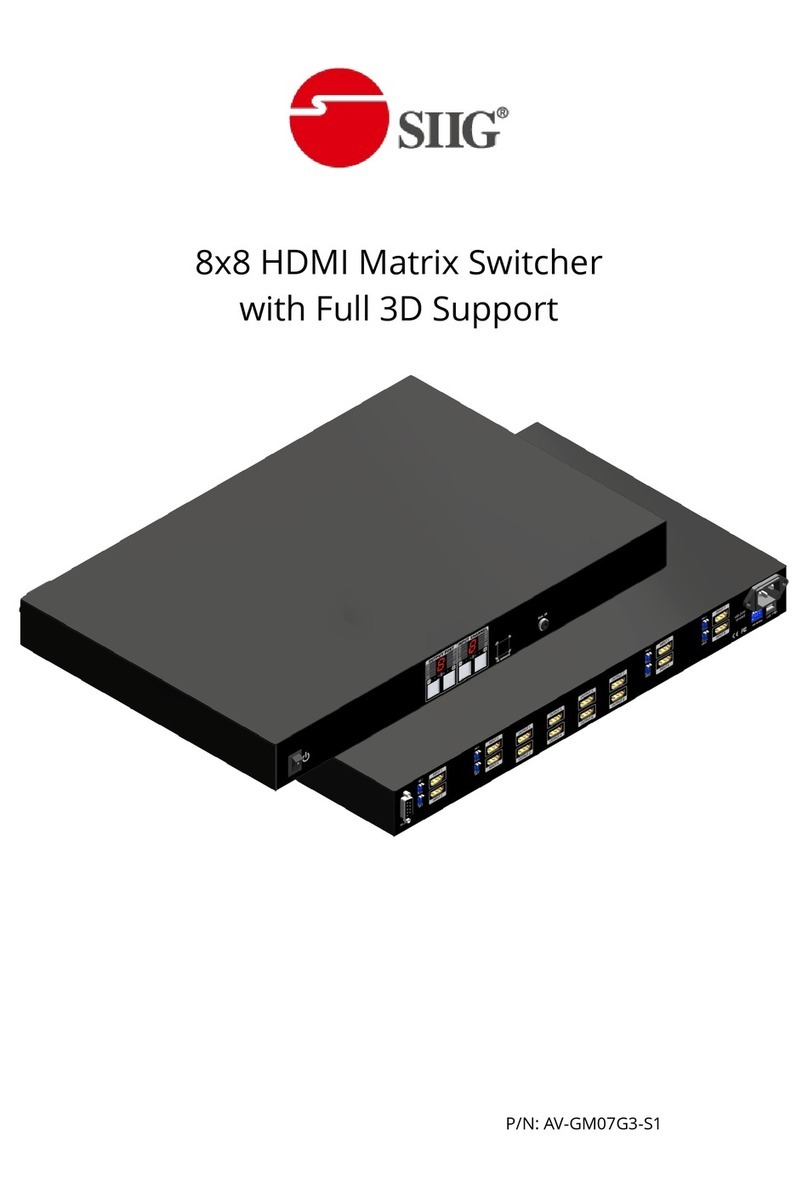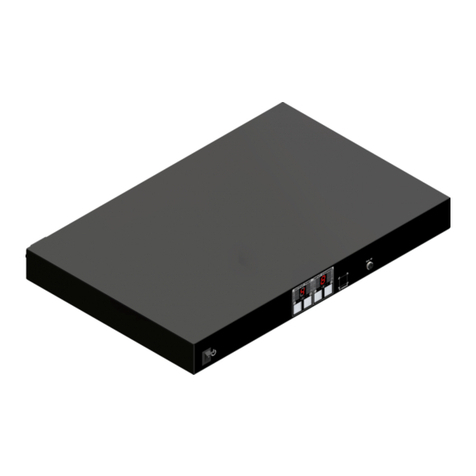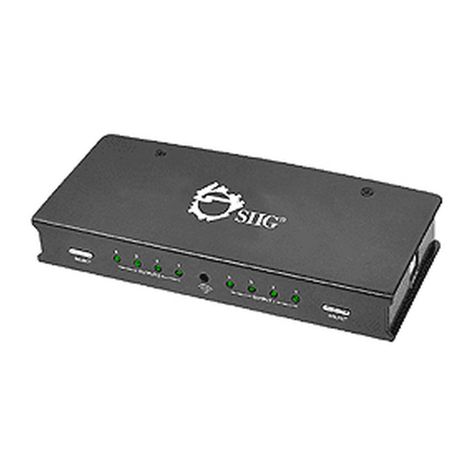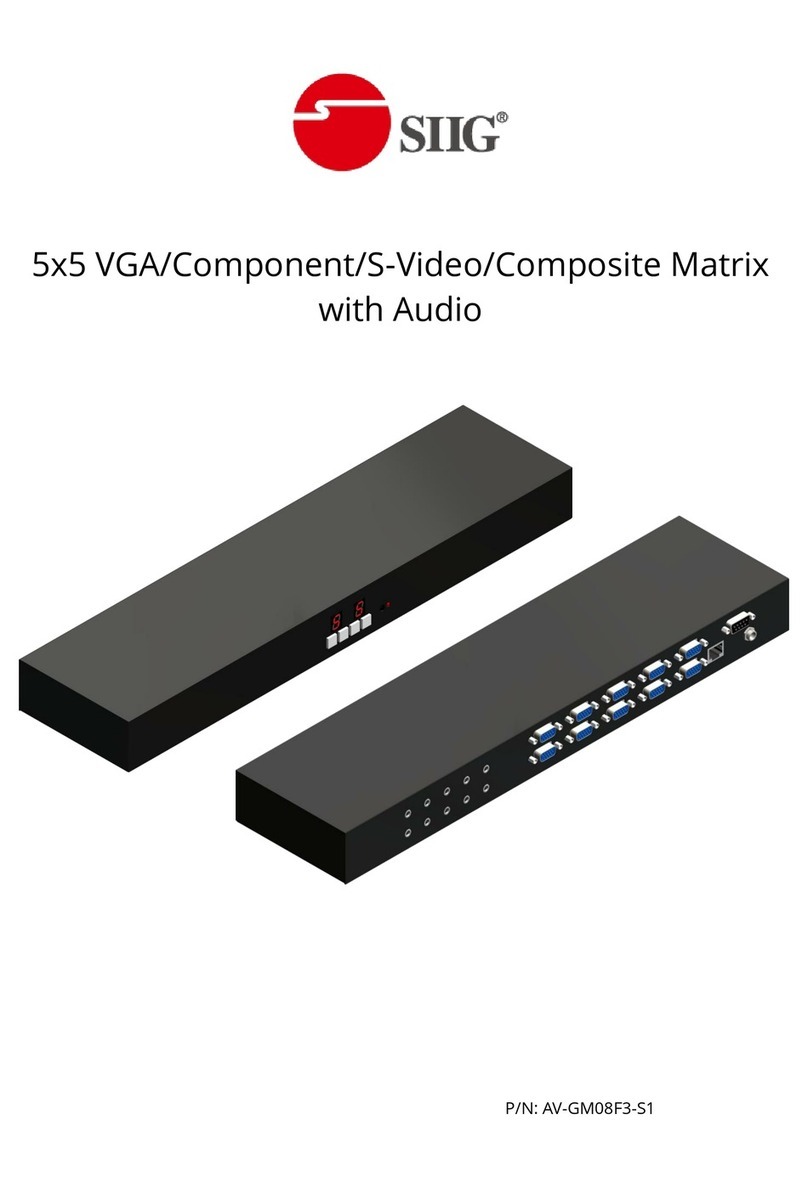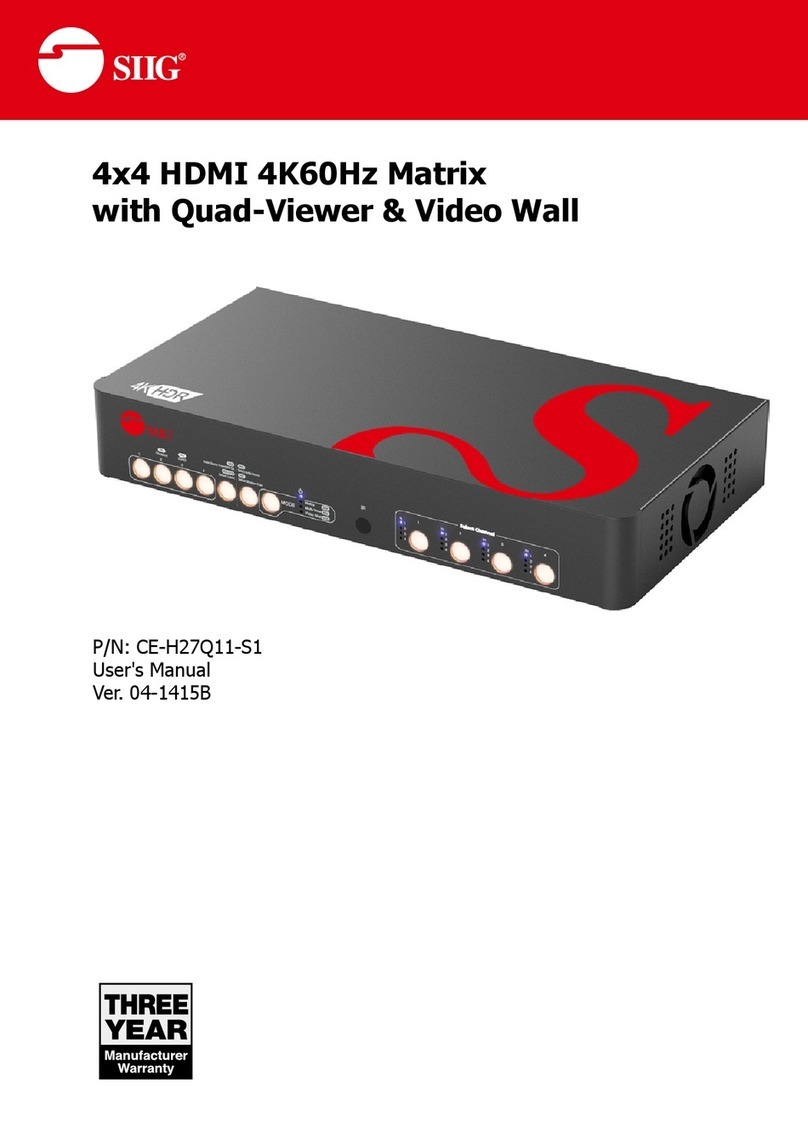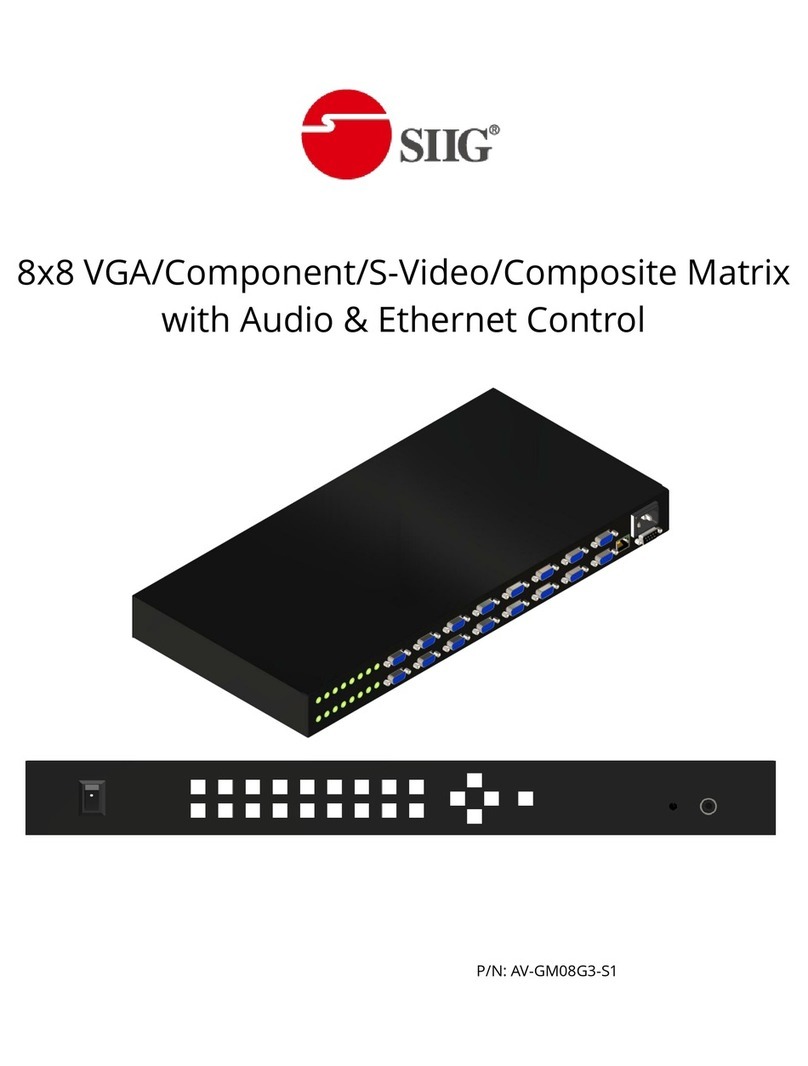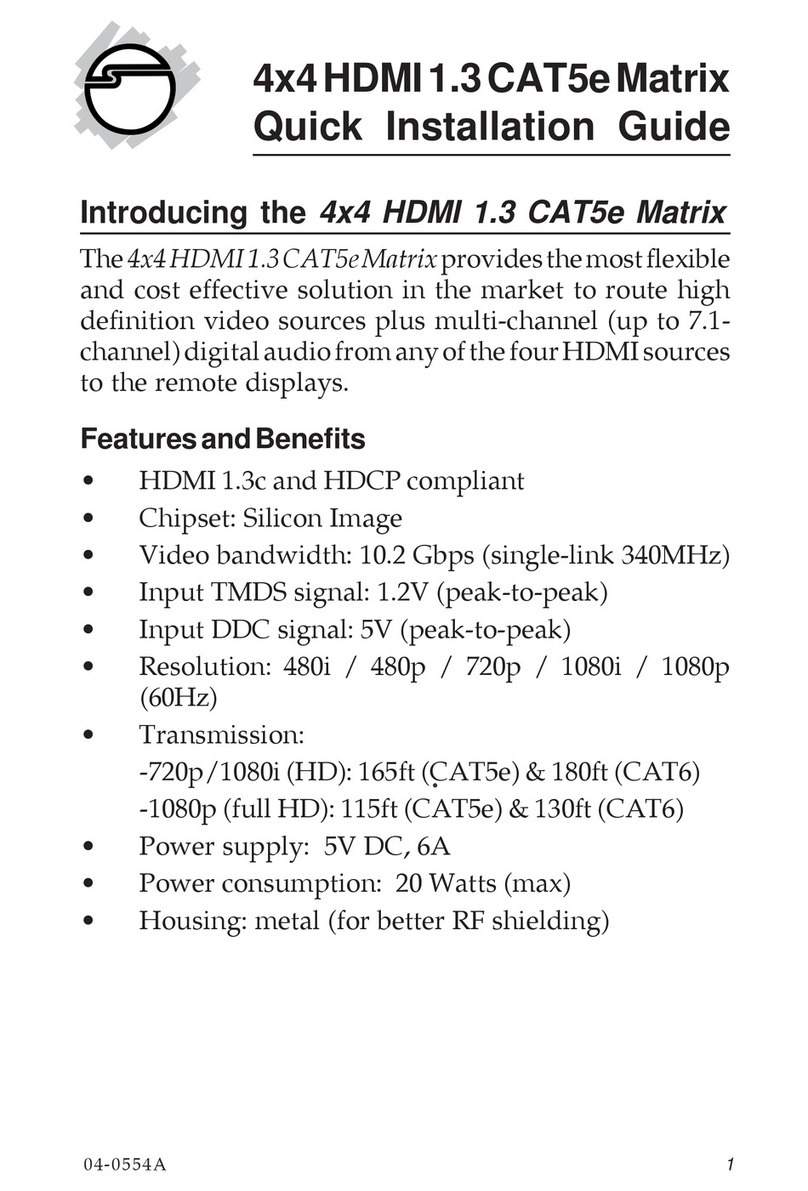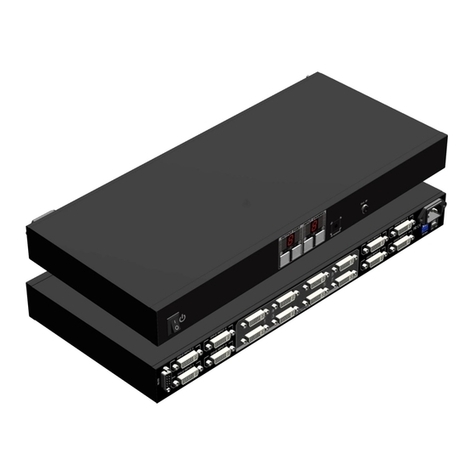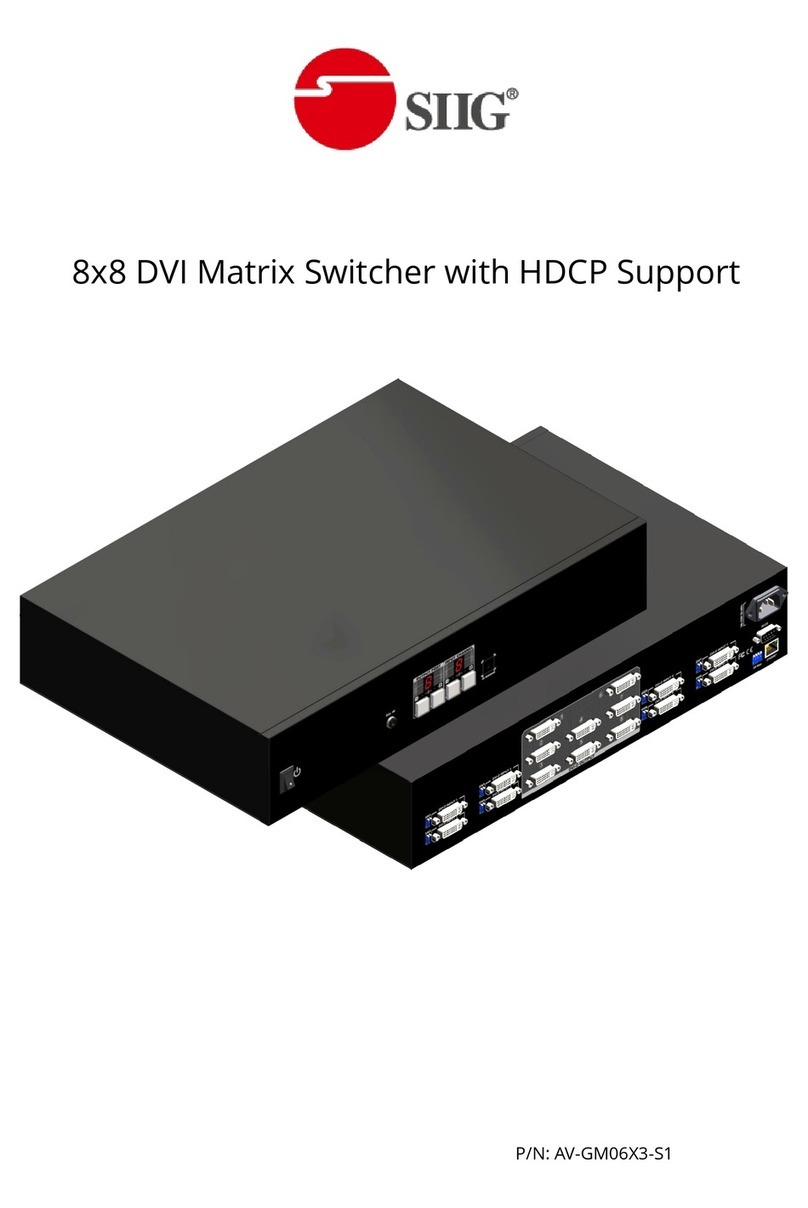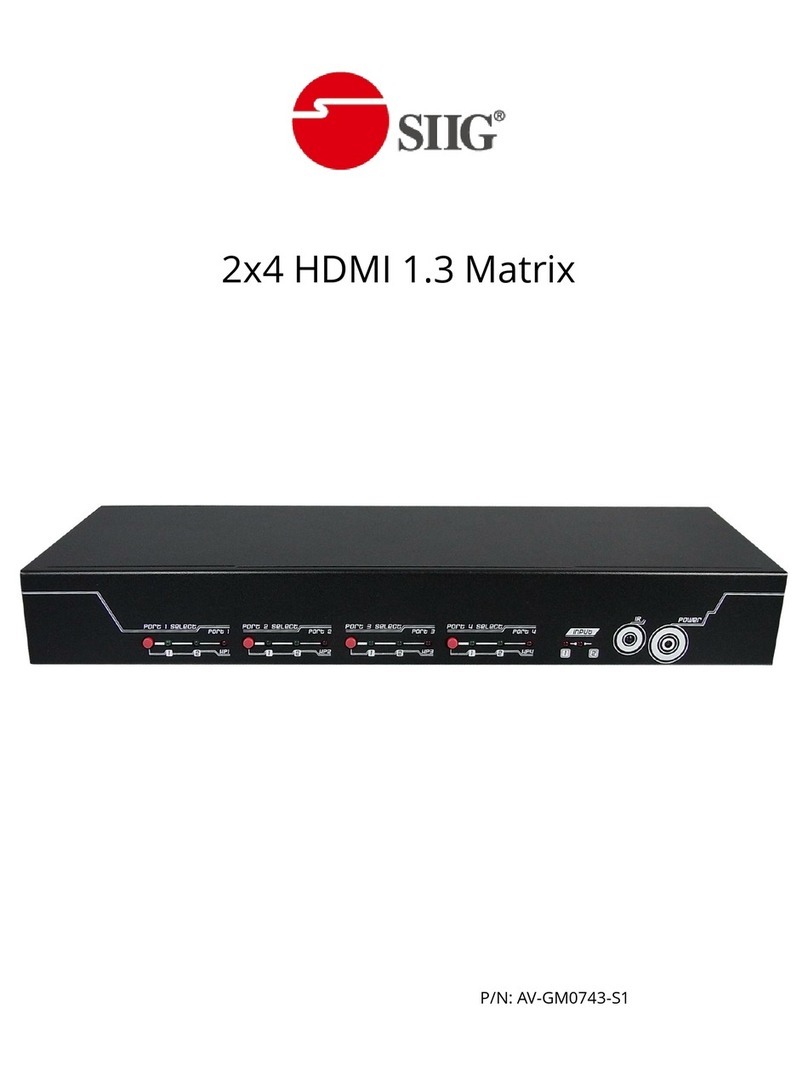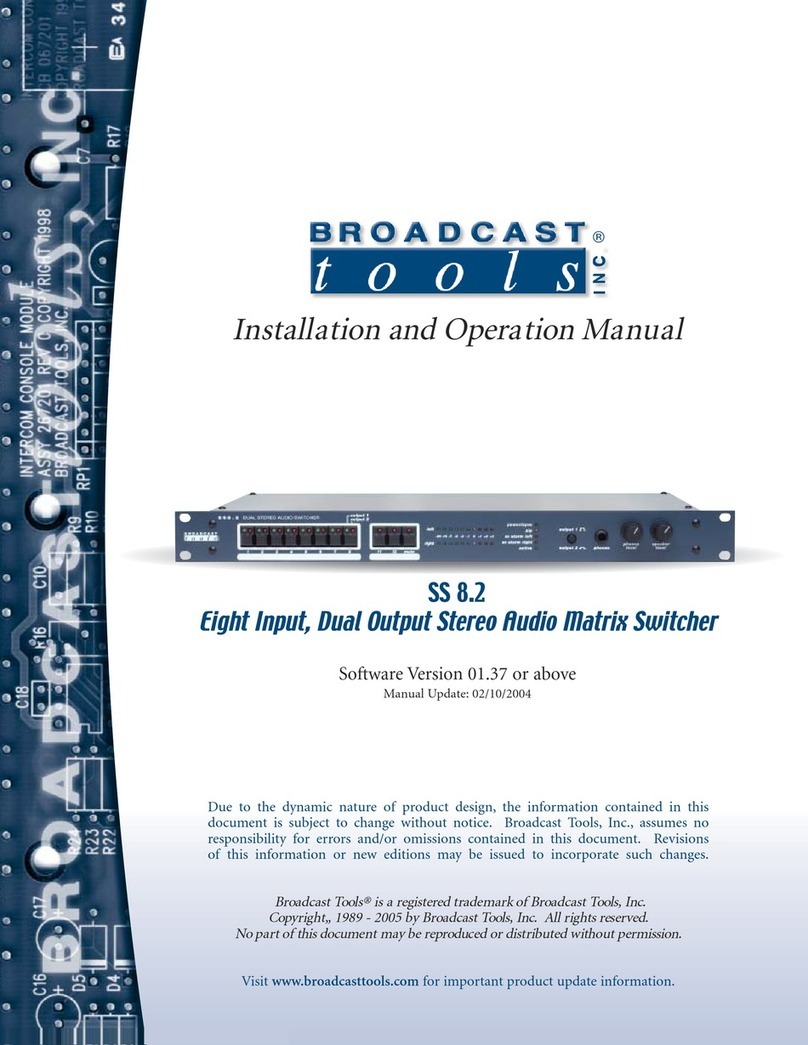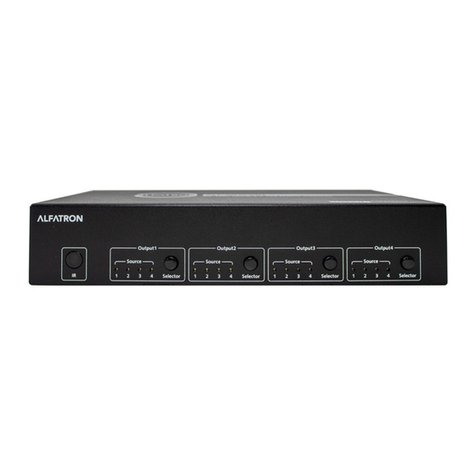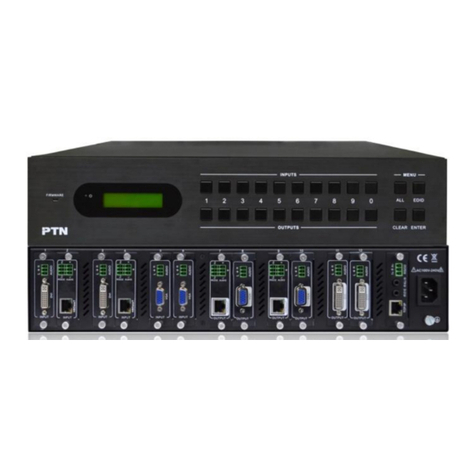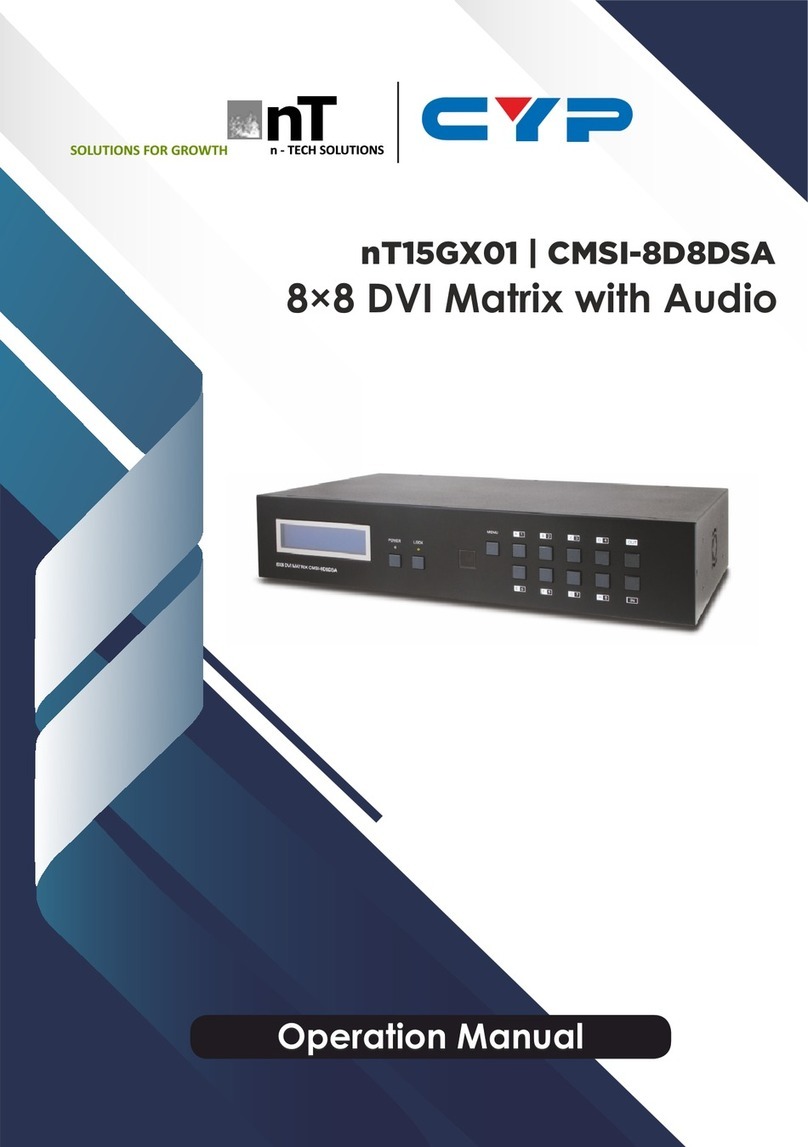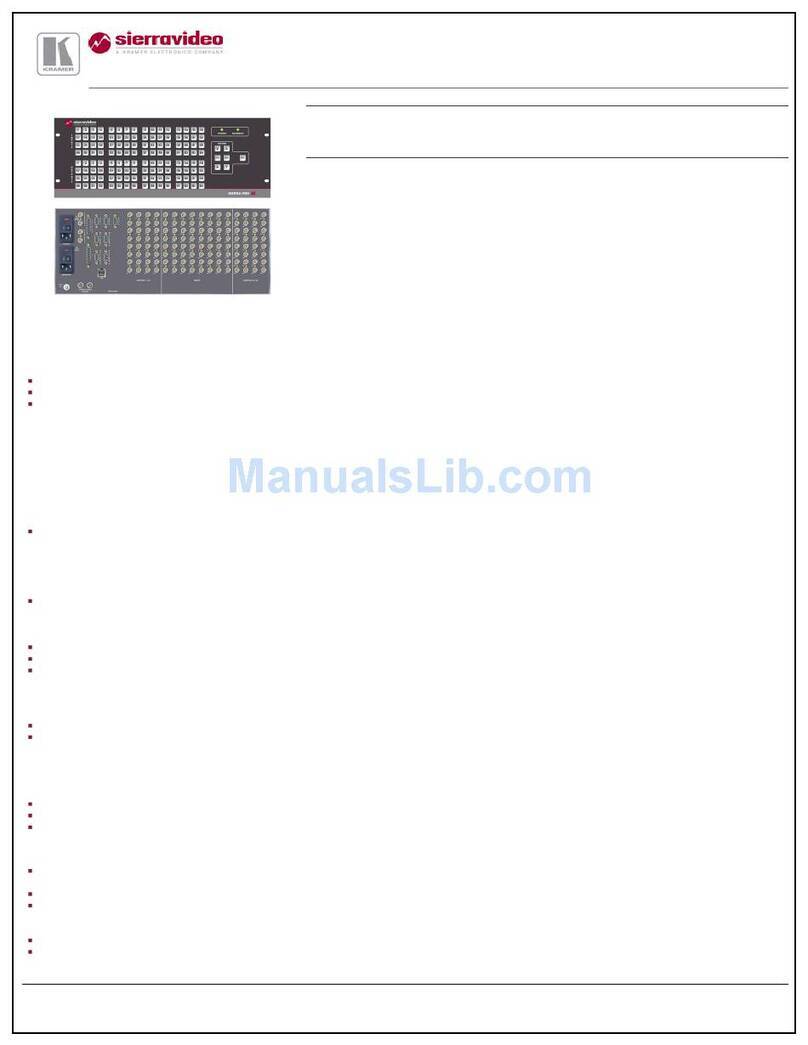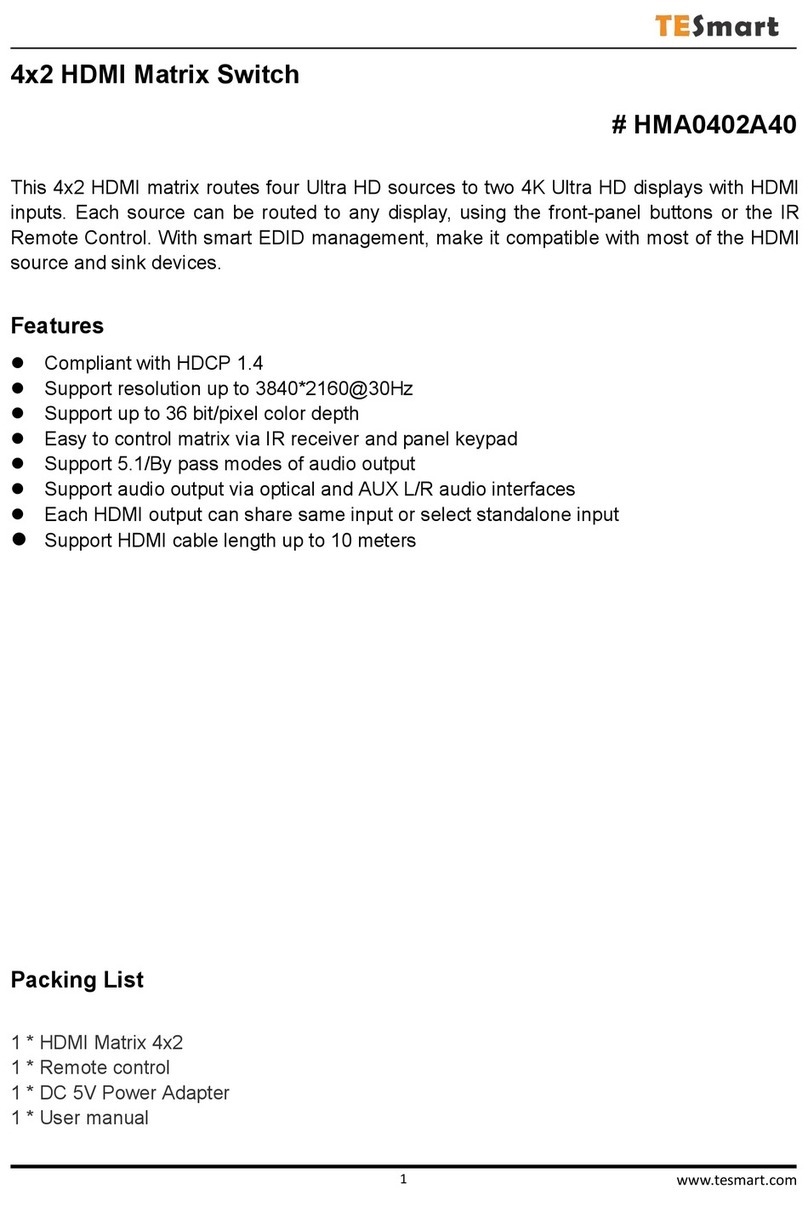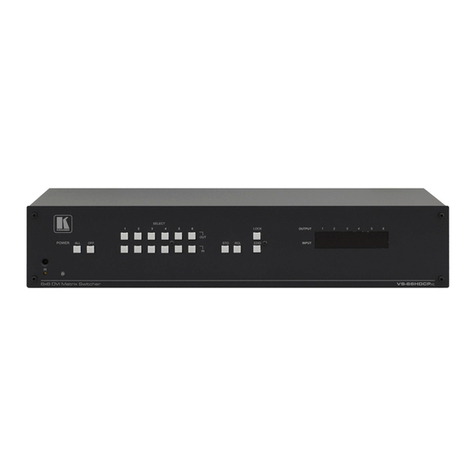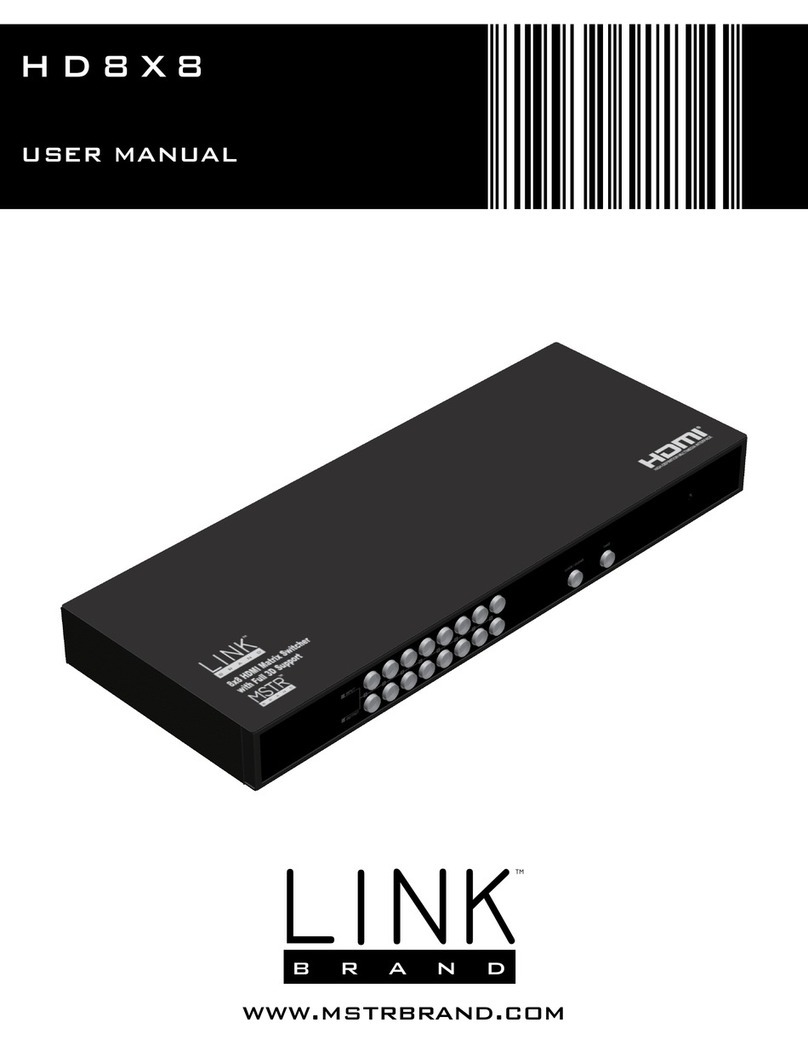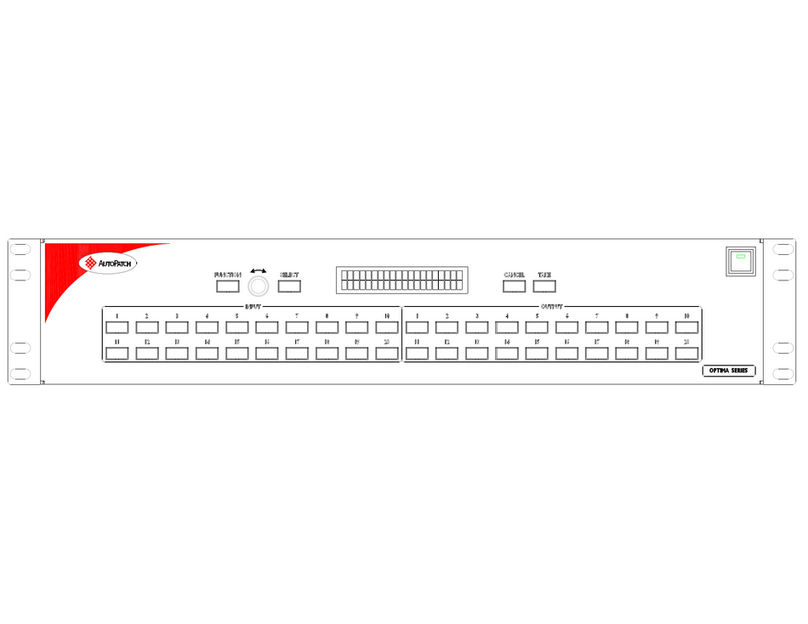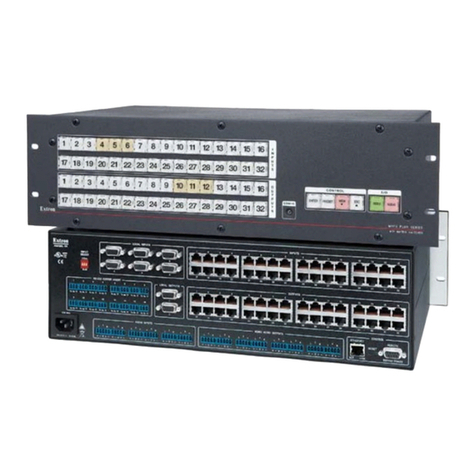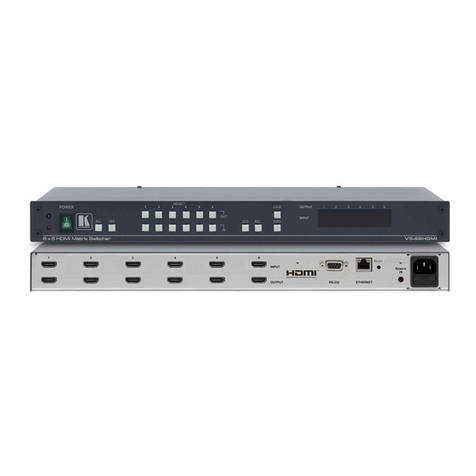
INTRODUCTION
The AV-GM07M3-S1 16x16 HDMI Matrix over Single Cat.X with HDBaseT-Lite provides the most
flexible and cost effective solution in the market to route high definition video sources plus
multi-channel (up to 7.1-channel) digital audio from any of the four HDMI sources to the remote
displays at the same time. Through only one low cost Cat-5/5e/6 LAN cables, not only high quality
video and audio can be transmitted to the display sites, but also users can switch among four HDMI
sources using the push-in button or remote control. Furthermore, the built-in IR extension function
makes users at display site access the DVD player, PS3 or any HDMI supported devices directly!
FEATURES
●Support HDMI Deep Color & full 3D & 4K2K@30 (HDBaseT technology)
●Extend the transmission up to 60m (198ft) from the HDMI source at Full HD 1080p 48-bit and
40m (130ft) at 4K2K@30
●HDCP compliant
●Bi-directional IR pass-though
●Allows controlling local HDMI sources or display through control path
●Allows to control main matrix center through control line at remote receiver
●Pure unaltered uncompressed 7.1ch digital HDMI over Cat.5/5e/6 cable transmission
●Allows any source to be displayed on multiple displays at the same time
●Allows any HDMI display to view any HDMI source at any time
●Supports 7.1 channel digital audio
●Supports default HDMI EDID and learns the EDID of displays
●The matrix master can switch every output channels to any HDMI inputs by IR remote control,
RS-232 and IP control
●Easy installation with rack-mounting
●Fast response time –2~4 seconds for channel switch
PACKAGE CONTENTS
●1x AV-GM07M3-S1 ●1x UL AC C13 power cord
●1x IR receiver ●1x IR blaster*
●1x Rack-mounting ear set ●1x IR Remote control*
●1x Installation software CD ●1x User Manual
